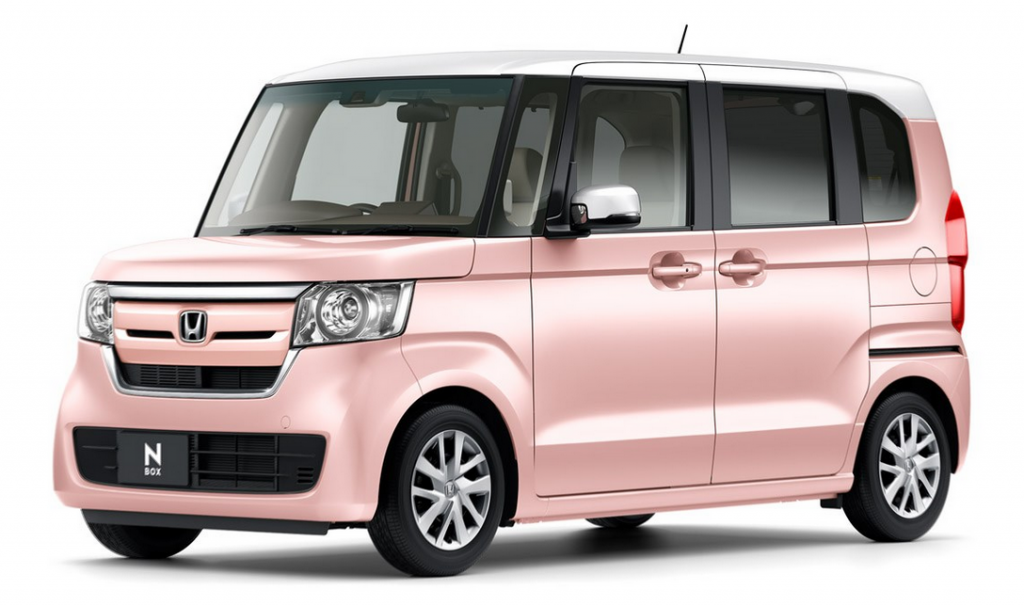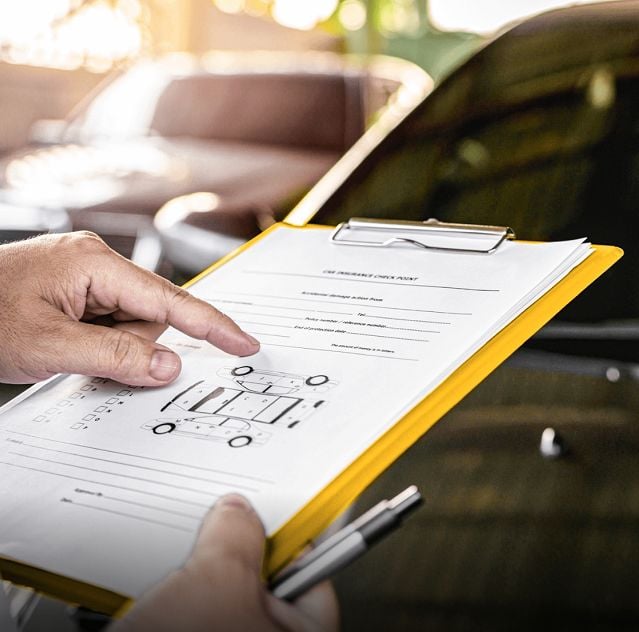

The Rise of the Kei Car
Exploring the Popularity and Innovation of Mini Cars in Japan
Kei cars, also known as mini cars or micro cars, have gained popularity in Japan due to their compact size, fuel efficiency, and affordability. Their rise can be attributed to rising fuel prices, environmental concerns, and the ability to navigate narrow streets and congested urban areas. Kei trucks, a variant of Kei cars, are also widely used for various commercial purposes. The introduction of the 660cc engine has revolutionized the efficiency of Kei cars, making them a practical and sustainable transportation option. The Japanese government has played a significant role in promoting the Kei Car market through tax regulations and incentives. Kei vehicles offer a convenient and economical solution for Japanese consumers and have the potential for further innovation and expansion in the future.
In recent years, a new trend has taken over the streets of Japan – the rise of the Kei car. These compact vehicles, also known as mini or micro cars, have become increasingly popular among Japanese drivers, revolutionizing the automotive industry in the country. In this article, we will take a closer look at the Kei car phenomenon, exploring its popularity and the factors behind its success. We will delve into the efficiency of the 660cc engine, which has redefined the concept of fuel efficiency in these vehicles. Additionally, we will compare Kei cars to conventional cars, highlighting why the mini-car trend is taking over Japan. Moreover, we will delve into the growing demand for Kei trucks, examining their versatility as compact commercial vehicles. Furthermore, we will explore the latest technological advancements in Japanese Kei cars and evaluate their environmental impact, focusing on the sustainable benefits they offer. Lastly, we will discuss the future of Kei cars, predicting trends for the Japanese microcar market. Join us as we embark on a journey through the world of Kei cars, uncovering the intricacies and significance of this revolutionary trend in Japan’s automotive landscape.
- 1. Introduction to the Kei Car Revolution: A Closer Look at the Rise of Mini Cars in Japan
- 2. Unveiling the Kei Car Phenomenon: Exploring the Popularity of Micro Cars in Japan
- 3. The 660cc Engine Revolution: How Japanese Kei Cars are Redefining Efficiency
- 4. Kei Cars vs. Conventional Cars: Why the Mini Car Trend is Taking Over Japan
- 5. The Versatility of Kei Trucks: A Peek into the Growing Demand for Compact Commercial Vehicles
- 6. Innovations in Japanese Kei Cars: Examining the Latest Technological Advancements
- 7. Environmental Impact of Kei Cars: Evaluating the Sustainable Benefits of Mini Cars
- 8. The Future of Kei Cars: Predictions and Trends for the Japanese Micro Car Market
1. Introduction to the Kei Car Revolution: A Closer Look at the Rise of Mini Cars in Japan
The Kei Car Revolution: A Closer Look at the Rise of Mini Cars in Japan
In recent years, there has been a significant shift in the automotive industry with the rise of the Kei car, also known as the mini car or micro car. These pint-sized vehicles have become increasingly popular in Japan, capturing the attention of both consumers and manufacturers alike. With their compact size, fuel efficiency, and affordable price tags, Kei cars have revolutionized the way people in Japan commute and travel.
The term “Kei car” originates from the Japanese word “keijidōsha,” which translates to “light automobile.” These vehicles were first introduced in Japan in the aftermath of World War II as a means to provide affordable transportation for the masses. The Japanese government implemented a set of regulations defining the specifications and restrictions for Kei cars, including engine size, dimensions, and power output.
One of the defining characteristics of Kei cars is their engine displacement, which is limited to 660cc. This restriction not only contributes to their compact size but also ensures exceptional fuel efficiency. With rising fuel prices and increasing environmental concerns, Kei cars have gained popularity as an eco-friendly alternative to larger, gas-guzzling vehicles.
Kei cars come in various forms, including sedans, hatchbacks, and even convertible models. However, they are not limited to passenger cars alone. Kei trucks, also known as Kei vans, have also emerged as a popular choice among small business owners and delivery services. These versatile vehicles offer ample cargo space while maintaining the advantages of being compact and maneuverable.
The Japanese kei car market has seen a surge in demand over the years, with many major manufacturers such as Honda, Suzuki, and Daihatsu investing heavily in their production. These companies have focused on designing Kei cars that not only meet the strict regulations but also offer style, comfort, and advanced features comparable to their larger counterparts.
The popularity of Kei cars can be attributed
2. Unveiling the Kei Car Phenomenon: Exploring the Popularity of Micro Cars in Japan
The Kei Car phenomenon has taken Japan by storm, with these compact vehicles gaining immense popularity among Japanese consumers. Also known as mini cars or micro cars, Kei Cars are defined by their unique specifications, particularly their engine size. With a maximum engine displacement of 660cc, these vehicles are specifically designed to meet certain regulations and requirements set by the Japanese government.
The rise of Kei Cars can be attributed to several factors. Firstly, their compact size makes them ideal for navigating Japan’s narrow streets and congested urban areas. With limited parking space and heavy traffic, Kei Cars offer a practical solution for city dwellers who need a convenient mode of transportation. Furthermore, their small size also translates to better fuel efficiency, making them an economical choice for Japanese consumers.
Another reason behind the popularity of Kei Cars is their affordability. Compared to larger vehicles, Kei Cars are relatively cheaper to buy and maintain. This makes them a viable option for individuals and families on a budget, especially for those who primarily use their vehicles for short commutes or errands.
Moreover, Kei Cars have also gained popularity for their versatility. Beyond traditional passenger cars, the Kei Car category also includes kei trucks, which are widely used for various commercial purposes. These mini trucks are favored by small businesses and delivery services due to their compact size, agility, and cost-effectiveness.
The Japanese government has played a significant role in promoting the Kei Car market. By implementing favorable tax regulations and providing incentives, the government has encouraged the production and purchase of these vehicles. Additionally, the regulations in place for Kei Cars, such as size restrictions and engine displacement limits, have ensured that these vehicles remain affordable and practical for the average consumer.
In conclusion, the Kei Car phenomenon in Japan can be attributed to their compact size, fuel efficiency, affordability, and versatility. With their unique specifications and government support, these micro cars have become a popular choice among Japanese consumers, offering a convenient and cost-effective solution
3. The 660cc Engine Revolution: How Japanese Kei Cars are Redefining Efficiency
The rise of the Kei car in Japan can be attributed to various factors, one of which is the revolution brought about by the introduction of the 660cc engine. These compact engines have redefined efficiency in the automotive industry and have become a defining characteristic of Japanese Kei cars.
The 660cc engine, also known as a micro engine, has allowed Kei cars to achieve remarkable fuel efficiency while still delivering adequate power for urban driving. The small size and lightweight nature of these engines contribute to their impressive performance, making them the perfect fit for the compact design of Kei cars.
Japanese Kei cars have gained popularity not only for their fuel efficiency but also for their affordability and ease of maneuverability in congested city streets. With the increasing concern for the environment and rising fuel costs, the demand for these mini-cars has soared in recent years.
The 660cc engine revolution has also extended to Kei trucks, which are widely used for commercial purposes in Japan. These small trucks offer a cost-effective solution for businesses that require transportation within urban areas. The reduced engine size not only lowers fuel consumption but also allows for easier parking and maneuvering in tight spaces.
Furthermore, the 660cc engine revolution has paved the way for advancements in hybrid and electric Kei cars. Manufacturers have been able to integrate hybrid technology into these compact vehicles, further enhancing their fuel efficiency and reducing their environmental impact.
In conclusion, the introduction of the 660cc engine has revolutionized the efficiency of Japanese Kei cars. These compact engines have not only contributed to the popularity of Kei cars but also played a significant role in redefining the automotive industry’s approach to efficiency. With their remarkable fuel economy and affordable pricing, Kei cars and trucks equipped with 660cc engines have become a practical and sustainable transportation option in Japan’s urban areas.
4. Kei Cars vs. Conventional Cars: Why the Mini Car Trend is Taking Over Japan
Kei Cars vs. Conventional Cars: Why the Mini Car Trend is Taking Over Japan
In recent years, Japan has witnessed a significant rise in the popularity of kei cars, also known as mini or micro cars. These compact vehicles, with their distinctive 660cc engines, have become a common sight on Japanese roads, outnumbering conventional cars in many areas. The surge in demand for kei cars can be attributed to a combination of factors, including their affordability, fuel efficiency, and unique benefits tailored to the needs of Japanese consumers.
One of the primary reasons behind the rise of kei cars in Japan is their cost-effectiveness. With the high cost of living and limited parking space in urban areas, many Japanese consumers find it more practical to opt for smaller, more affordable vehicles. Kei cars are significantly cheaper than conventional cars, both in terms of purchase price and ongoing maintenance costs. This affordability factor has particularly appealed to budget-conscious individuals, young drivers, and families looking for a reliable and economical means of transportation.
Another compelling advantage of kei cars is their exceptional fuel efficiency. Equipped with small engines, these vehicles consume significantly less fuel compared to their larger counterparts. The 660cc engines, while modest in size, provide ample power to navigate through crowded city streets and suburban roads. Moreover, the lower fuel consumption of kei cars aligns with Japan’s commitment to reducing carbon emissions and promoting environmental sustainability.
The Japanese kei car market offers a wide range of options, including sedans, hatchbacks, wagons, and even kei trucks. This diverse selection caters to the varying needs and preferences of different consumers. Additionally, kei cars often come equipped with advanced safety features, ensuring the well-being of occupants in the event of an accident. These safety measures, combined with their compact size and maneuverability, make kei cars an ideal choice for navigating Japan’s narrow streets and tight parking spaces.
Furthermore, the Japanese government has played a crucial role in promoting
5. The Versatility of Kei Trucks: A Peek into the Growing Demand for Compact Commercial Vehicles
One of the most remarkable aspects of the rise of the Kei car phenomenon is the growing demand for compact commercial vehicles, particularly Kei trucks. These versatile vehicles have gained significant popularity in Japan and are now starting to make waves in other markets around the world.
Kei trucks, also known as Kei-class trucks or mini trucks, are small commercial vehicles that share the same characteristics as their passenger car counterparts. With their compact size and lightweight construction, Kei trucks are often powered by fuel-efficient engines, typically with a maximum displacement of 660cc. This not only makes them environmentally friendly but also allows them to navigate narrow streets and tight corners with ease.
The versatility of Kei trucks is truly remarkable. Despite their small size, they offer impressive payload capacities, making them ideal for various commercial applications. These vehicles can be found in a wide range of industries, including agriculture, construction, delivery services, and even mobile food trucks. Their compact dimensions allow them to access tight spaces and maneuver through congested urban areas, making them invaluable for businesses operating in crowded city centers.
Moreover, the economic advantages of Kei trucks cannot be overlooked. Their fuel efficiency and low operating costs make them an attractive option for small businesses and individuals. Kei trucks are often more affordable to purchase and maintain compared to larger commercial vehicles, making them an accessible choice for entrepreneurs and start-ups with limited budgets.
In recent years, the demand for Kei trucks has been steadily increasing. This can be attributed to the growing emphasis on sustainability and urban mobility, as well as the need for cost-effective commercial vehicles. As more countries recognize the benefits of compact and eco-friendly transportation solutions, the popularity of Kei trucks is expected to continue rising.
The Japanese kei car market, which includes Kei trucks, has been a driving force behind the development and innovation in this segment. With strict regulations and standards imposed by the Japanese government, manufacturers have been compelled to engineer efficient, safe, and reliable Kei vehicles. This
6. Innovations in Japanese Kei Cars: Examining the Latest Technological Advancements
In recent years, Japanese kei cars have witnessed a surge in popularity due to their unique features, compact size, and economic benefits. These mini cars, also known as micro cars, are defined by their engine displacement of 660cc, making them an affordable and practical choice for urban commuting. However, what truly sets kei cars apart is the continuous innovation and technological advancements that have been implemented in their design.
One of the notable innovations in Japanese kei cars is in the area of fuel efficiency. With growing concerns about environmental sustainability, manufacturers have focused on developing kei cars that are more fuel-efficient and emit fewer emissions. Advanced engine technologies, such as direct fuel injection and turbocharging, have been incorporated into these vehicles to enhance their performance while reducing fuel consumption. This not only benefits the environment but also helps owners save on fuel costs in the long run.
Another area of innovation in kei cars is the integration of advanced safety features. Despite their small size, manufacturers have made significant strides in ensuring the safety of occupants. Many kei cars now come equipped with features like electronic stability control, anti-lock braking systems, and multiple airbags. Additionally, advanced driver assistance systems, such as lane departure warning and automatic emergency braking, are being introduced to enhance the overall safety of these vehicles.
Furthermore, Japanese kei cars have witnessed advancements in connectivity and infotainment systems. As technology continues to evolve, kei cars are now equipped with touchscreen displays, smartphone integration, and Bluetooth connectivity. This allows drivers to seamlessly connect their devices and access various apps for navigation, music streaming, and hands-free calling. These technological advancements not only enhance the driving experience but also cater to the needs of tech-savvy consumers.
In recent years, the popularity of kei trucks has also grown significantly. These mini trucks offer versatile cargo-carrying capabilities, making them ideal for small businesses and delivery services. Manufacturers have incorporated innovations in kei trucks as well, such as improved payload capacity, better handling
7. Environmental Impact of Kei Cars: Evaluating the Sustainable Benefits of Mini Cars
The rise of Kei cars, also known as mini cars or micro cars, in the automotive industry, has sparked a discussion about their environmental impact. These compact vehicles, typically powered by 660cc engines, have gained popularity in Japan due to their fuel efficiency and affordable pricing. As the world becomes more conscious of the need for sustainable transportation options, it is important to evaluate the sustainable benefits of Kei cars.
One of the key advantages of Kei cars is their low carbon footprint. With their smaller size and lightweight construction, these vehicles require less fuel to operate, resulting in lower CO2 emissions compared to larger vehicles. Furthermore, the Japanese government has implemented strict emission standards for Kei cars, ensuring that they meet stringent environmental regulations.
In addition to reduced emissions, Kei cars contribute to the conservation of resources. These vehicles require less raw materials for manufacturing, resulting in a lower demand for resources such as steel and plastic. Moreover, Kei cars often have higher fuel efficiency ratings compared to larger vehicles, meaning they consume less gasoline, reducing the overall demand for fossil fuels.
The compact nature of Kei cars also leads to reduced traffic congestion and lower energy consumption. With their smaller size, these vehicles are easier to maneuver and park in crowded urban areas. By occupying less road space, Kei cars help alleviate traffic congestion, leading to smoother traffic flow and reduced idling times. This, in turn, reduces energy consumption and lowers emissions caused by traffic congestion.
Kei trucks, a variant of Kei cars, also play a vital role in sustainable transportation. These small commercial vehicles are commonly used for urban deliveries, allowing businesses to transport goods efficiently while minimizing their environmental impact. Kei trucks offer a greener alternative to larger delivery vehicles, as they consume less fuel and have a smaller carbon footprint.
While Kei cars offer several sustainable benefits, it is important to acknowledge their limitations. Due to their smaller size, these vehicles may not be suitable for larger families or individuals requiring significant cargo space.
8. The Future of Kei Cars: Predictions and Trends for the Japanese Micro Car Market
The future of Kei Cars holds promising opportunities for the Japanese microcar market. With their compact size, fuel efficiency, and affordability, Kei Cars have gained immense popularity among urban dwellers and those seeking cost-effective transportation options. As we look ahead, several predictions and trends are expected to shape the future of these unique vehicles.
Firstly, the demand for Kei Cars is projected to continue growing. As cities become more congested and parking space becomes scarcer, the need for compact vehicles like Kei Cars will only increase. Their ability to maneuver through narrow streets and fit into tight parking spots makes them an ideal choice for urban environments. Additionally, their smaller size and lower emissions contribute to reducing traffic congestion and addressing environmental concerns.
Another trend that will shape the future of Kei Cars is the advancement of electric and hybrid technology. With the rising focus on sustainability and reducing carbon emissions, automakers are investing in developing electric and hybrid Kei Cars. These vehicles will not only provide the same benefits of compactness and affordability but also contribute to a greener future. The combination of the Kei Car’s small size and electric or hybrid powertrain will make them even more attractive to environmentally conscious consumers.
Furthermore, the 660cc engine size limit, a defining characteristic of Kei Cars, may see potential revisions. The Japanese government has been considering increasing the engine displacement limit to accommodate evolving consumer needs and technological advancements. This change would allow for more powerful engines, enhanced performance, and improved safety features without compromising the Kei Car’s core characteristics. The revision could potentially open up new possibilities for the market, attracting a broader range of buyers who seek a balance between compactness and performance.
Additionally, the versatility of Kei Cars extends beyond personal transportation. Kei trucks, another category of micro vehicles, are widely used for commercial purposes such as delivery services and small-scale businesses. With the increasing popularity of e-commerce and the need for efficient last-mile delivery solutions, the demand for Kei trucks
In conclusion, the rise of the Kei Car in Japan has been nothing short of revolutionary. These mini cars, with their compact size and efficient 660cc engines, have captured the hearts of Japanese consumers and are quickly becoming the preferred choice over conventional cars. The versatility of Kei trucks has also contributed to their growing popularity, especially in the commercial sector. Additionally, continuous innovations in Japanese Kei Cars have made them technologically advanced and environmentally friendly. As we look to the future, it is clear that the Kei Car trend will continue to dominate the Japanese microcar market. With their sustainable benefits and cost-effectiveness, it is no wonder that the Kei Car phenomenon shows no signs of slowing down.
Table of Contents
ToggleAdd a comment Cancel reply
Categories
- Auto Detailing (5)
- Car News (54)
- Car Reviews (48)
- Classic Cars (26)
- Importing Rules By Country (5)
- Japan Car Auctions (5)
- JDM (18)
- Uncategorized (23)
Recent Posts
About us

I am not one for writing articles actually so most of these articles come from contributors that I have met over the years or with a little help of supporters.
If you have any desire to import a car from Japan or simply need some advice get in touch via Whatsapp here at +81-90-5400-6384
Looking For That Special Car Has Never Been Easier.
Finding the right car in Japan is not always easy and finding the best partner in Japan to help you with this is sometimes even harder.
With over 25 years buying history and great contacts all over Japan I can help you in every way.
Get hold of me today!
Popular Tags
Related posts


30 Upcoming Blog Titles






Japanese Used Cars for Sale, Quality, Value, and Easy Import Guide






Water Damaged Cars












